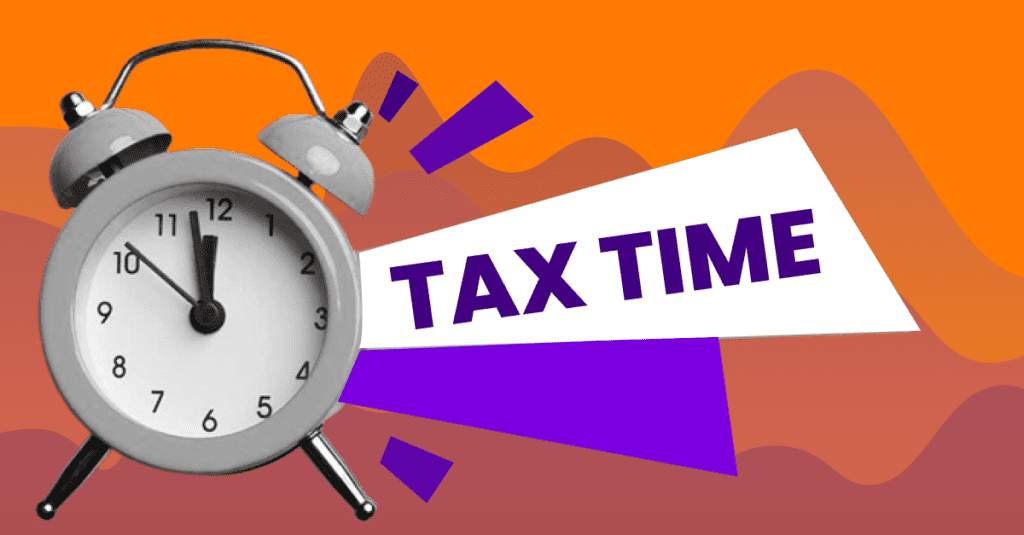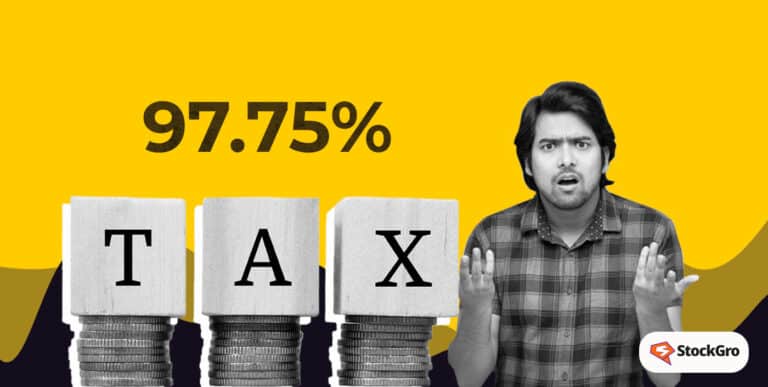
REMINDER: The new financial year 2023-24 has officially begun. And with that, it’s time to submit your income tax declaration (ITD). But wait, there’s one crucial question to answer – which income tax regime is better – old regime vs new regime?
Before you make that choice, let’s fully understand what the income tax declaration (ITD) form is! It is a document that you (the employee) have to send to your company (the employer), at the beginning of a financial year, stating your gross income, investments, and expenses for the upcoming year.
And choosing between the old and new regime has become tricky, especially after Finance Minister Nirmala Sitharaman announced some changes during her budget 2023 speech. But you have nothing to worry about as this blog aims to simplify things for you.
Read Also: Indians Had To Pay 97.75% As Tax – Shocking Story Of India’s Marginal Tax Rate
Old Vs. New Regime – Which income tax regime is better?
It’s like choosing between mutual funds and stocks. Each has its limitations and merits. What matters is your requirements.
Remember that starting April 01, 2023, the new regime would be treated as the default one. But you still have the choice to opt for the old version. Just, you need to specify it at the beginning of the financial year. Before the deadline runs out!
In the case of the tax regime, your decision entirely depends on your yearly income, investment portfolio, and the list of sureshot expenses. Let’s give you some perspective.
Above 7 lakhs, Old Regime Will Be Your Saviour!
Income Tax Deductions – Old Regime
On comparing both regimes, you can easily spot one basic difference – income tax deductions. In the old regime, you had a host of deductions to save taxes. These include house rent, insurance premiums, savings schemes, education or home loan, investments, etc.
It’s almost as if the old regime is nagging you to scale up your investment and save taxes. At least that’s what an optimist would learn. And well, good things never come easy.
In the new regime, however, there are ZERO deductions. Just fill in your income and calculate your taxes. Of course, you can apply for a Standard Deduction up to Rs. 50,000. But that’s it. Taxes are done and no need to cancel on your date.
Read Also: The anatomy of a stock market crash
Difference Between Old and New Tax Regime
Income tax slabs – Old vs. New
Although the new tax regime does not offer many deductions, it compensates by increasing the income tax slabs. The old regime barely had four slabs and all those who earned above Rs.10 lakh were liable to pay 30% tax (unless deductions were applied).
| Income Slabs | % Income Tax |
| Up to Rs. 2.5 lakhs | Nil |
| Rs. 2.5 – 5 lakhs | 5% |
| Rs. 5 – 10 lakhs | 20% |
| Above 10 lakhs | 30% |
But the new tax regime offers several new income slabs. So, those earnings above Rs. 10 lakhs have been further bifurcated into several categories. And if you earn below Rs. 10 lakhs, the % tax has further been reduced.
Now that’s definitely a breather!
| For FY 2022-23 | For FY 2023-24 | ||
| Income Slabs | Rate (%) | Income Slabs | Rate (%) |
| Up to Rs. 2.5 lakhs | Nil | Up to Rs. 3 lakhs | Nil |
| Rs. 2.5 – 5 lakh | 5% | Rs. 3 – 6 lakhs | 5% |
| Rs. 5 – 7.5 lakh | 10% | Rs. 6 – 9 lakhs | 10% |
| Rs. 7.5 – 10 lakh | 15% | Rs. 9 – 12 lakhs | 15% |
| Rs. 10-12.5 lakh | 20% | Rs. 12-15 lakhs | 20% |
| Rs. 12.5-15 lakh | 25% | Rs. 15 lakh & above | 30% |
| Rs. 15 lakh & above | 30% | – | – |
*As per rebate under Section 87A, income up to Rs. 7 lakhs is tax-free for FY 2023-24.
Now here’s another twist in the story – during Budget 2023, everybody was busy rejoicing at the changes in the tax regime. But they missed out on a crucial detail – Section 87A rebate!
What is Section 87A Rebate?
What does this rebate mean? Well, put simply, you can claim a reduction or rebate of Rs. 25,000 on your total taxes Moreover, under the new tax regime, this rebate can be claimed if net taxable income is less than Rs. 7 lakhs. However, in the old regime, this rebate was limited to Rs. 5,00,000 taxable amount.
Sounds confusing? Well, an example can make things simpler.
Imagine person X earns Rs. 5,00,000 per annum
Net taxable income after Standard Deduction of Rs. 50,000 = Rs. 4,50,000
Thus, as per the new tax regime, taxes to pay = 5 percent of Rs. 4.5 lakh = Rs. 22,500
This value is less than the rebate of Rs. 25,000. Thus, person X has no taxes to pay.
In a nutshell, if the old tax regime has income tax deductions to offer, the new regime has a rebate to compensate.
Now here’s another “but” – what if your income falls outside the Rs.7,00,000 bracket? No rebates and no deductions. This is where your choice of regime proves most useful.
Section 80C in the Old Tax Regime
If you fall under a higher income slab, you’re liable to pay higher taxes, irrespective of the scheme. But the old tax regime provides crucial tax relief through Section 80C of the Income Tax Act.
As per this section, you can get a maximum tax deduction of Rs. 1,50,000, if you have invested in schemes like the National Pension Scheme (NPS) or Equity Linked Savings Scheme (ELSS). But the new regime does not provide any such deductions.
Let’s take an example to understand how 80C is crucial for those earning the BIG BUCKS!
Say, person X earns Rs. 8 lakh per annum and a part of it is the interest earned on the NPS scheme.
Thus, under the new regime, their net taxable income = Rs. 6,00,000 (80C + Standard Deduction)
Then, the tax to pay = Rs. 1,20,000 (saving Rs. 40,000 through deductions)
This amount will further reduce considerably if person X claims deductions in the form of –
- Leave travel allowance (LTA)
- Children education allowance
- Deduction for professional tax
- House rent allowance (HRA)
- Interest on housing loan
- Deduction for specified investments or expenses including public provident fund (PPF), repayment of principal on housing loan, life insurance premium, children’s school fees, etc.
These deductions or exemptions are not applicable under the new tax regime.
Now, consider the same example under the new regime.
If person X were to opt for the new tax regime,
Net taxable income = Rs. 7.50,000 (Standard Deduction of Rs. 50,000)
Tax to pay = Rs. 75,000
Please note, although the new regime offers lower tax, no income tax deductions can be claimed.
Thus, in simple terms, make a choice keeping those deductions in mind. After all, your basic aim is to reduce your tax liability!
Surcharges on Higher Income
During FM’s budget 2023 speech, the surcharge was reduced from 37 percent to 25 percent, under the new tax regime. What does this mean? Time for another Sherlock dive.
If you earn more than Rs. 50 lakh, you’re expected to pay an additional amount along with applicable taxes. This amount in fancy terms is called a ‘surcharge’.
In the old tax regime, those earning above Rs. 5 crore were expected to pay 37 per cent of income tax, as a surcharge, above the tax amount. Under the new regime, this % has been reduced to 25 percent.
| Range of Income | Surcharge as of FY 2023-24 |
| Up to Rs. 50 lakh | Nil |
| Rs. 50 lakh to Rs. 1 crore | 10% |
| Rs.1 crore to Rs. 2 crore | 15% |
| Rs. 2 crore to Rs. 5 crore | 25% |
| Above Rs. 5 crore | 25% |
Changing income tax regime – allowed or not?
You’re after all, human. And although this is not rocket science, filing your IT declaration is no piece of cake. So it may happen that in the middle of washing your dishes, the realisation hits. And you need to change your regime.
Well buddy, if you’re a salaried individual, you can hop from one regime to another in each financial year. But not in the middle of the year.
If however, you own a business, your regime choice stays for LIFE! All the more reason to calculate your taxes under both schemes, before choosing the regime.
Wish to calculate income tax? Use Stockgro’s Income Tax Calculator
Income Tax Filing – Important Dates
April: Deciding on the tax regime: old or new
May: Filing income tax declaration
June: Paying advance tax by June 15 (in case of other income)
July: Filing ITR for the previous year
September: Paying second instalment of advance tax
December: Submitting proof of investment; paying the third instalment of advance tax
February: Following budget to know income tax changes
March: Paying advance tax, on or before 15th of the given month

